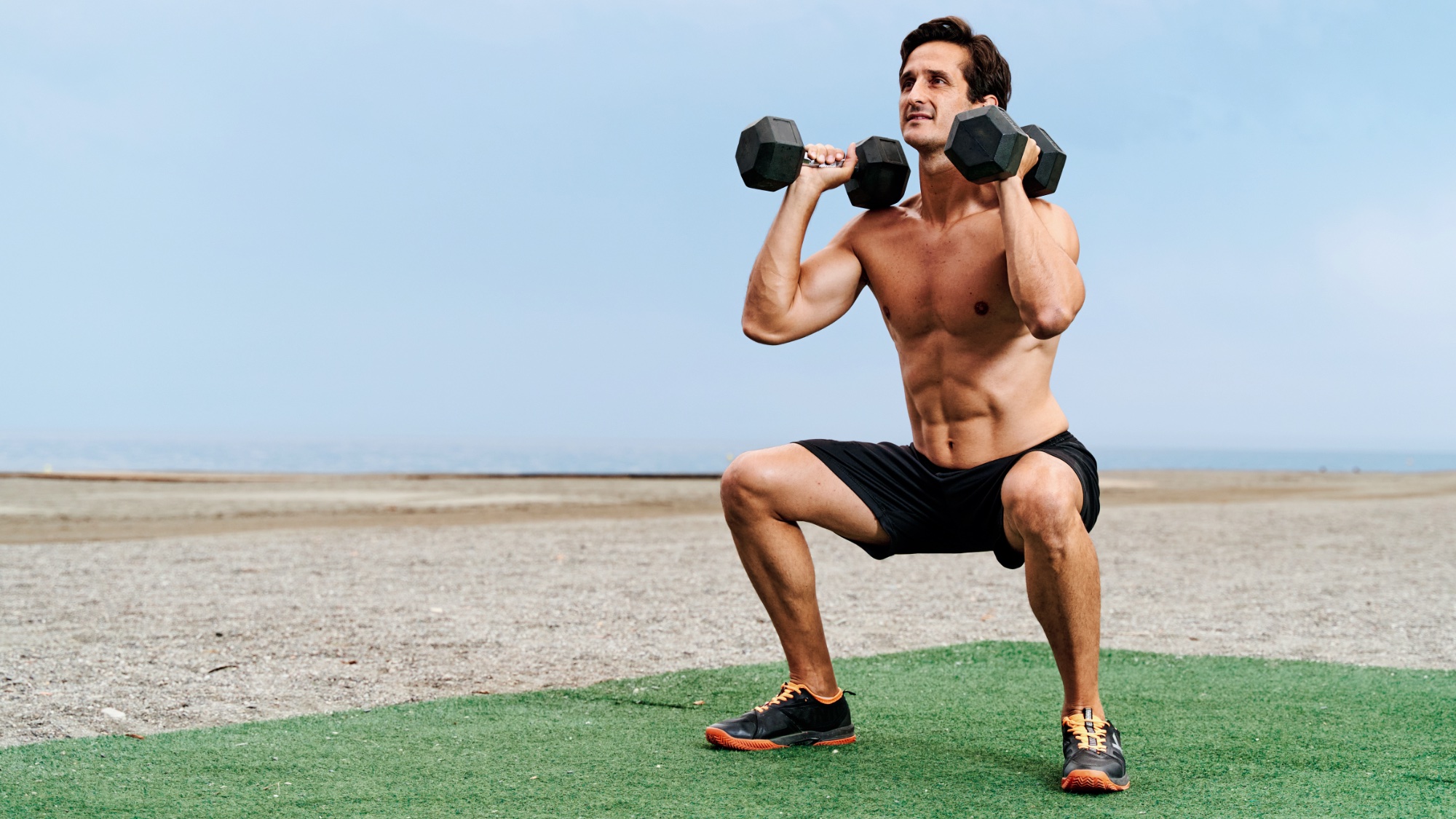
If you’re one of the many runners who does no strength training, then you’re missing out. Most runners know that some supportive strength work will help reduce the risk of injury, but lots miss the fact that strength training can improve performance significantly.
I’m guilty of this as much as anyone. I log 50-60 miles a week of running, often supplemented with indoor bike rides and yoga, but have struggled to make strength training a consistent part of my routine.
So I asked physiotherapist Patrick Carroll for a back-to-basics dumbbell workout for runners. Along with being a specialist musculoskeletal physiotherapist, Carroll is the creator of the Running Buddy app, which provides strength training programmes for runners, so he was the perfect person to ask for this, and he obliged with this six-move dumbbell session that hits the key areas runners should be focusing on with their strength work.
For the workout you need a set of dumbbells — the only ones I have are 27.5lbs and they were fine, but having some lighter weights for the arm moves and heavier ones for the leg exercises might have been better for me. If you have a set of adjustable dumbbells that would be ideal.
You also need a box or table to sit down on for single-leg squats, and a step or something you can stand on for elevated calf raises — I just used my stairs for this, and sat back onto a chair for the squats. I loved the workout and intend to make it a regular feature of my training routine going forward.
Watch Patrick Carroll’s Dumbbell Workout For Runners
Carroll demonstrates each move in the workout in the video, and it’s worth checking it out because pacing is important for some of the exercises. He’s also given some form pointers below. You’ll be doing one set of each move in the circuit in a row with minimal rest, then take a two minute break at the end of the circuit before going again. Aim to do 3-5 rounds of the circuit in total.
Explosive Dumbbell Squat
Do 6-8 reps of this exercise. Hold the dumbbells by your sides and lower into a squat, then drive back up to standing explosively.
“Focus on driving up from the bottom position,” says Carroll.
Bent Over Reverse Fly
Do 10-15 reps. Hold the dumbbells by your sides and lean over from your hips. With your elbows bent, lift the dumbbells out to the sides until they are level with your shoulders.
“Try to have your torso as close to parallel to the ground as you can,” says Carroll.
Single Leg Box Squat
Do 8 -10 reps on each leg. Stand on one leg in front of a table or bench, holding one dumbbell in both hands in front of your chest. Lower into a squat to touch the surface behind you, then push back up to standing. Do all your reps on one leg before switching.
“Lower yourself down with control and aim to gently touch the surface,” says Carroll. “Drive up more quickly.”
Overhead press
Do 10-12 reps. Stand with your dumbbells by your shoulders. Press them up above your head, then bring them back down.
“Reach up for the ceiling,” says Carroll. “Keep the base of your ribcage down to help avoid arching your lower back.”
Hip Hinge
Do 8-10 reps. Lean forward from your hips to feel the stretch in your hamstrings, then come back up.
“Start with your knees ‘unlocked’,” says Carroll. “Push your backside out behind you and aim to keep it up high. You should feel tension in your hamstrings.”
Elevated Single Leg Heel Raise
Do 10-15 reps on each leg. Stand on one leg on an elevated surface so your heel is dangling over the side. Raise your heel slowly, then lower it back down past the edge of the surface. Do all your reps on one side before switching.
“Control the speed of the movement,” says Carroll. “Push through the big toe side of your foot as you come close to the top. A count of three seconds up and three seconds down is a good tempo.”







